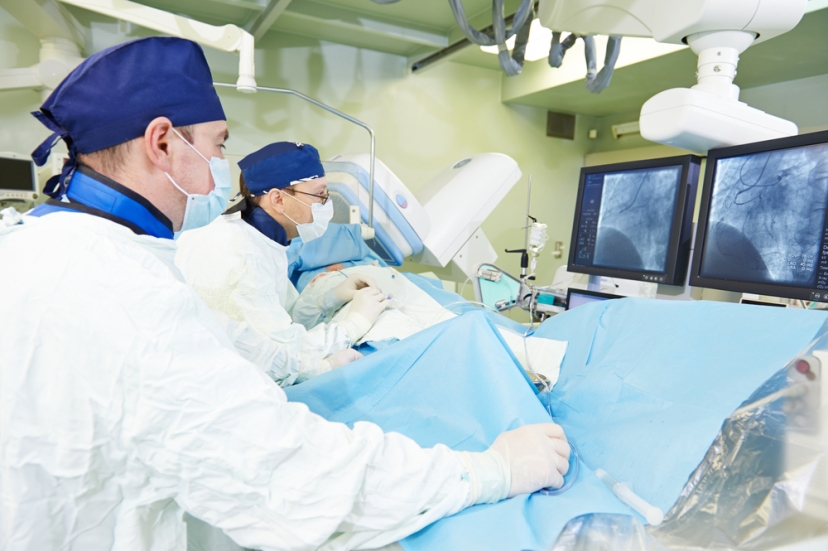Mechanical thrombectomy is a way to survive acute stroke
It is difficult to deny that acute stroke is very dangerous and can cause deaths in patients, because still clot-busting medications have some limitations in certain patients. As a result, treating the patient by inserting a catheter through the arteries to remove blood clots in the brain and open blocked arteries to allow blood supply to the brain is a way for stroke patients to survive, with reduced risk of paresis and paralysis and increased survivability.
Who require mechanical thrombectomy?
1. Patients undergoing intravenous clot-busting medications treatment who continue to experience abnormal symptoms and blockage of a major cerebral artery.
2. People with contraindications for intravenous clot-busting medications or abnormal blood clotting whose major cerebral artery is blocked.
3. Acute cerebral thrombosis patients who experienced their symptoms for over 5 hours but no more than 24 hours.
4. Patients after undergoing a major surgery who have risk of abnormal bleeding if administered an intravenous clot-busting medications with acute cerebral thrombosis.
5. Patients whose site of thrombosis is not too complex to reach.
Changes after Undergoing Mechanical Thrombectomy
Whether nervous system abnormalities will recur or return to normal depends on several factors such as time from onset of symptoms to treatment, size of site of ischemia where the tissue is not dead, extent of brain damage, age of the patient, blood supply from adjacent arteries to the part of the brain suffering from ischemia, presence of chronic diseases in the patient, etc.
Benefits of Mechanical Thrombectomy
- It reduces complications in patients with thrombosis in major cerebral arteries.
- It reduces the rate of disability and death.
- It reduces risk from open-skull surgery.
Risk of Complications from Mechanical Thrombectomy
- It can cause cerebral ischemia in other cerebral arteries or cerebral vasospasm.
- It can cause changes to symptoms of the nervous system, for example by causing greater listlessness, slurred speech and weaknesses in the arms and legs.
- Brain hemorrhaging or recurring thrombosis can happen after mechanical thrombectomy
- Complications can occur from inhaling the anesthetic.
- Complications can occur from physical reactions to the radiological dyeing agent.
- Complications can occur from use of the blood clot removal device, e.g., punctured cerebral artery or torn cerebral arterial walls.
- Bleeding can occur at the site of insertion of the arterial catheter at the groin, e.g., recurring bleeding at the site of insertion of the catheter, hematoma formation, retroperitoneal bleeding, arterial dissection and false aneurism.
Bleeding, infection or pain might occur at the site of catheter insertion.
Care after Mechanical Thrombectomy
After treatment, the patient has to rest in the critical care unit in order to monitor treatment responses and potential complications. Next, the patient needs to undergo physical and nervous system rehabilitation through physical therapy in order to return to living as normally as possible.
The treatment outcomes will vary depending on each patient and various factors such as time since onset of symptoms up to the moment of treatment, area of brain damage, and area of the brain suffering from ischemia, blood supply to the ischemic region of the brain from nearby blood vessels (leptomeningeal collateral vessels), age and chronic diseases of the patient. Furthermore, doctors will communicate with and provide information to patients and relatives about the cause of the disease in order to provide behavioral recommendations and prevent recurrence.
Appropriate Self-care Practices after Mechanical Thrombectomy
- If there are nervous system changes, e.g., listlessness, limb weaknesses, etc., immediately bring the patient to the hospital.
- Monitor the wound at the groin and immediately return to the hospital upon encountering complications, for example, if the wound in the groin area is swollen, red, hot and secreting fluids.
- Avoid lifting heavy objects or riding bicycles for 2 weeks to prevent development of blood clots or false aneurism at the groin where the catheter was removed from the artery.
- The patient should visit the doctor according to appointments for continuous symptom follow-ups and treatment, and, before returning to work or to performing other occupations as normal, the patient should be evaluated or consult the doctor first.
- Continuously take medications according to the doctor’s prescription and continue monitoring for undesirable side effects from medications. Patients who receive mechanical thrombectomy have to be careful when it comes to use of anti-platelet medications like aspirin and non-steroidal anti-inflammatory drugs (NSAIDs).
You may find our specialist here at Neurological Center, Phyathai 2 Hospital
Phyathai 2 Hospital
International Correspondence Center
Tel: +66-2617-2444 ext. 2020 or 2047 E mail: onestop@phyathai.com
 @pt2_inter
@pt2_inter
 Phyathai 2 Cambodia
Phyathai 2 Cambodia
 PT2Chinese
PT2Chinese
 phyathai2inter
phyathai2inter
